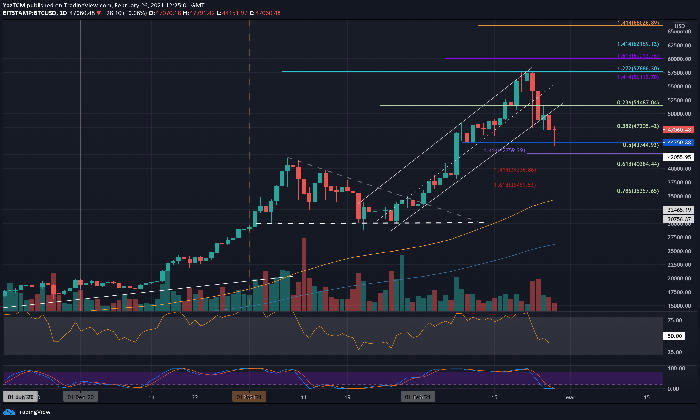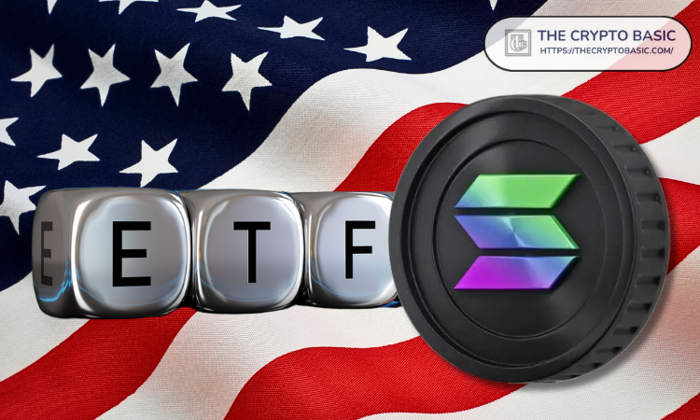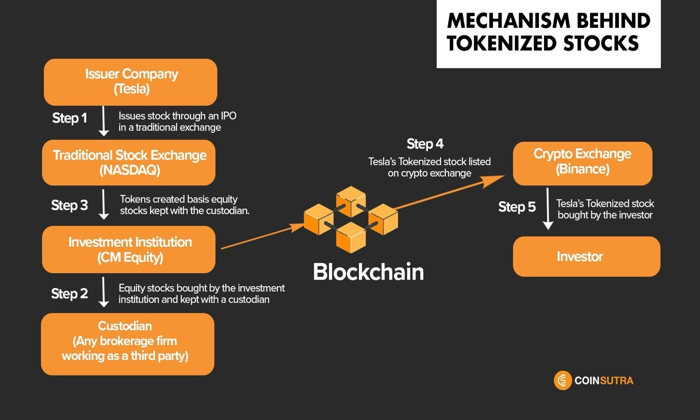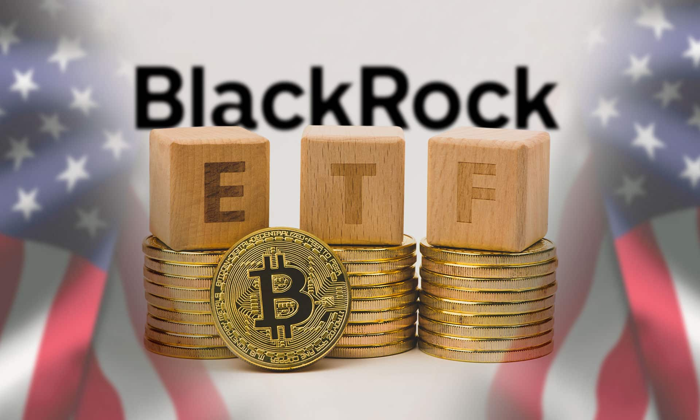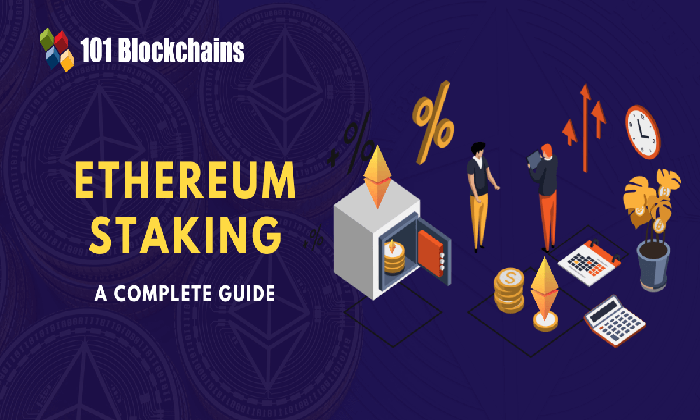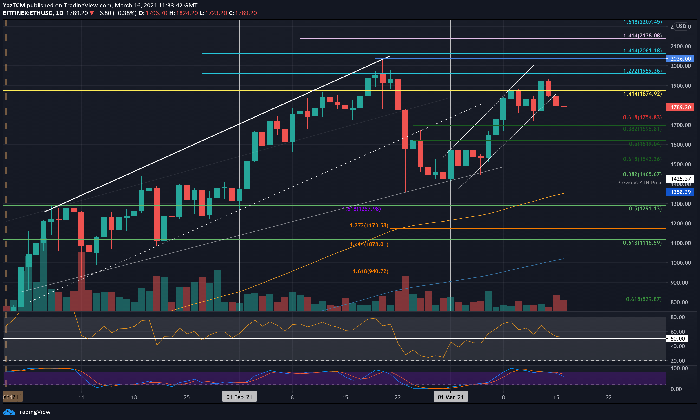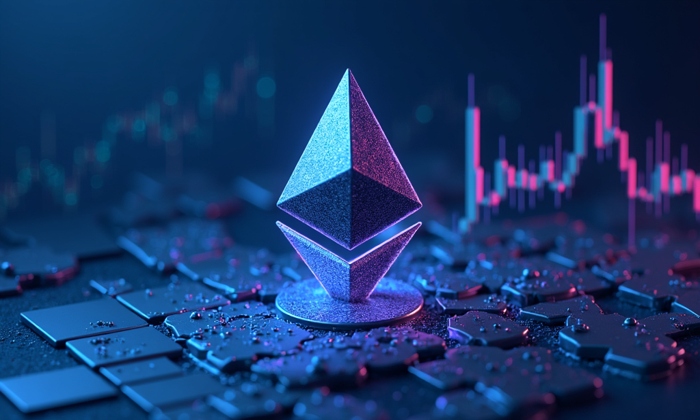Blockchain interoperability is fast becoming a critical focus for the evolution of decentralized networks, as it addresses the pressing need for seamless communication between isolated blockchains. As proposed by Solana co-founder Anatoly Yakovenko, enhanced interoperability can be achieved through innovative solutions like data availability layers and cross-chain technologies. These advancements allow various blockchain ecosystems, including Ethereum and Solana, to efficiently exchange data, fostering collaboration and growth within the Web3 space. With numerous blockchain upgrades on the horizon, such as Ethereum’s upcoming Fusaka upgrade, the goal of achieving cohesive interaction across multiple chains is drawing significant attention. This push towards a meta blockchain proposal promises a future where digital assets can flow effortlessly across platforms, ultimately enhancing user experience and accessibility in the crypto landscape.
The notion of blockchain interoperability relates to the ability of diverse blockchain systems to communicate effectively and share information seamlessly. This concept is often illustrated through terms like cross-chain connectivity and data-sharing protocols, reflecting the increasing urgency for solutions that overcome the barriers of fragmented blockchain networks. The innovations proposed by industry leaders, including the meta blockchain concept, are paving the way for a more integrated Web3 ecosystem. As platforms like Ethereum introduce enhancements to their data availability mechanisms, the future looks promising for fostering collaborative frameworks among blockchains. In this evolving landscape, the integration of multiple blockchain infrastructures presents a powerful avenue toward realizing a more connected and scalable digital economy.
The Need for Blockchain Interoperability
Blockchain interoperability is increasingly seen as a crucial element for the evolution of decentralized networks. With numerous layer-1 (L1) blockchains operating independently, the ability for these systems to interact and communicate effectively is paramount. Projects that allow for cross-chain solutions can help facilitate transactions and data exchanges without the friction currently experienced in the industry. This necessity has led to innovative proposals like the meta blockchain, which aims to aggregate data across various networks such as Ethereum and Solana, ensuring seamless communication between them.
Interoperability not only expands the functionality of blockchain applications but also enhances user experience by allowing transactions to flow more freely across disparate systems. As more developers recognize the importance of creating mechanisms that support data availability layers, the potential for decentralized applications to reach new heights increases significantly. Therefore, enhancing blockchain interoperability stands at the forefront of discussions aimed at shaping the future of Web3.
Exploring Data Availability Layers in Blockchain
Data availability (DA) layers act as a crucial bridge in the blockchain ecosystem, providing a mechanism that ensures all necessary data is accessible for validating transactions across different blocks. As noted by Solana’s co-founder Anatoly Yakovenko, these third-party solutions are essential for facilitating cross-chain interactions, especially when blockchains are operating in silos. The introduction of a meta blockchain that utilizes efficient DA solutions is a step towards enabling higher efficiencies in data communication, allowing more streamlined operations across various blockchain networks.
With Ethereum’s upcoming upgrades, including the highly anticipated EIP-7594, the scalability of data availability is set to improve significantly. The upgrade is positioned to boost the Ethereum mainnet’s capacity, ultimately contributing to lower costs associated with data availability. By addressing the core issues related to data availability, developers can create more robust decentralized applications that are less reliant on individual blockchain networks, significantly enhancing the user experience and promoting a more interconnected ecosystem.
Insights into the Meta Blockchain Proposal
Anatoly Yakovenko’s meta blockchain proposal signals a new direction towards resolving blockchain fragmentation. By creating a framework that aggregates data from leading chains, the meta blockchain not only enhances data accessibility but also promises to mitigate costs associated with transactions. The idea that a more effective DA solution could obviate the need for external sequencers presents an appealing prospect for the blockchain community, paving the way for more intuitive cross-chain transactions.
The proposal has garnered attention not just for its theoretical implications but also for its practical potential in enhancing blockchain interoperability. By employing a rule-based system to merge transactions across chains, users could execute cross-chain transfers seamlessly. This development aligns with broader industry objectives where collaboration and interconnectivity among blockchains become the norm rather than the exception.
The Role of Ethereum Upgrades in Blockchain Integration
As the Ethereum network anticipates several critical upgrades, one of the most discussed aspects is the importance of enhancing its position as a data availability layer. The forthcoming EIP-7594 aims to bolster Ethereum’s capacity in this regard, promoting interoperability with other blockchains. This upgrade is anticipated to facilitate smoother interactions and improve overall functionality, which is essential for applications that need to operate across different platforms.
Furthermore, Ethereum’s commitment to continuous improvement sets a precedent for other blockchains to follow suit. As Ethereum’s upgrades unfold, it’s likely that additional ecosystems will look to replicate these strategies to enhance their capabilities. The drive towards efficient blockchain integration reflects a collective industry effort to streamline processes, reduce transaction costs, and ultimately support a more interconnected network of blockchain technologies.
Cross-Chain Solutions: Bridging Blockchain Networks
The emergence of cross-chain solutions has become a focal point in the blockchain industry as developers strive to break down barriers inhibiting communication among distinct blockchain networks. The innovative frameworks being developed aim to facilitate transactions between diverse ecosystems, thereby enabling improved interoperability. By leveraging technologies like meta blockchains and data availability layers, cross-chain solutions are positioning themselves as the vanguard of a more collaborative future for blockchain.
Various projects are now exploring how to effectively implement cross-chain capabilities, addressing the inherent incompatibilities between different protocols. Successful deployment of these solutions will enhance the utility of blockchain technologies as users will be empowered to interact with multiple networks more efficiently. This evolving landscape indicates a clear shift towards creating an inclusive ecosystem where interoperability is standard, not an exception.
Solana and the Future of Collaborative Blockchain Solutions
As one of the leading blockchain platforms, Solana is at the forefront of innovation in the crypto space, particularly with its recent proposals aimed at fostering cooperative tokenomics and enhanced interoperability. The insights shared by Solana’s co-founder, Anatoly Yakovenko, reflect the need for blockchain teams to work together, emphasizing a joint focus on shared goals rather than competition. The push for collaboration within the blockchain ecosystem could lead to groundbreaking advancements in technology and economics.
Solana’s initiative to propose a meta blockchain and encourage DA solutions reflects a growing awareness of the fragmentation issue currently afflicting the ecosystem. By fostering collaboration, not only are Solana’s developments encouraging other blockchains to adopt similar approaches, but they also provide a pathway to more effective cross-chain interactions. Such collaborations could yield far-reaching benefits, establishing a more interconnected and efficient blockchain landscape.
The Economic Implications of Enhanced Blockchain Collaboration
The move towards greater blockchain interoperability and collaboration goes beyond technical solutions; it also carries significant economic implications. As major industry players advocate for cooperative tokenomics, the structure of incentives among various networks will shift from being largely competitive to nurturing mutual growth. This economic paradigm could help resolve current adversities where blockchain networks are seen as rivals competing for market share.
When blockchain ecosystems start to leverage cooperative economics, the traditional zero-sum approach could be replaced with frameworks that allow for shared rewards and benefits. This transition could foster an environment where all participants thrive, ultimately driving greater innovation within the blockchain industry. Enhanced collaboration aims to create a holistic growth model where the success of one network contributes positively to its peers, paving the way for a more sustainable and prosperous blockchain future.
The Future Landscape of Decentralized Applications
As the future of decentralized applications (dApps) unfolds, anticipated advancements in blockchain interoperability will play a pivotal role. Developers are focusing on creating applications that can seamlessly function across multiple blockchain ecosystems, greatly enhancing user accessibility and experience. The adoption of cross-chain solutions such as those proposed by Solana and Ethereum is indicative of a growing trend towards building interconnected dApps capable of harnessing the strengths of various networks.
This shift ensures that dApps will no longer be bound by the limitations of a single blockchain, allowing for a richer, more diverse array of functionalities. Future developments may include applications that utilize data from several chains simultaneously, offering users a unique and integrated experience. As the infrastructure evolves to support these innovative dApps, we can expect a transformation in the blockchain landscape where cooperation and interoperability drive the next wave of digital solutions.
Challenges and Opportunities in the Blockchain Ecosystem
While the move towards enhanced blockchain interoperability heralds numerous opportunities, several challenges remain. The complexity of integrating multiple blockchain architecture presents hurdles that developers must overcome. Ensuring reliable security protocols while enabling smooth data exchange across various chains will be paramount. Nonetheless, initiatives like the meta blockchain suggest that the industry is actively addressing these issues, laying the groundwork for a more unified approach.
In tackling these challenges, the blockchain community also stands to gain invaluable insights that could further stimulate innovation. Each obstacle presents an opportunity for developers to craft unique solutions that push the boundaries of what’s possible with blockchain technology. Ultimately, the industry’s drive to address these challenges head-on could yield advances that redefine operational standards and open the door to a more collaborative future.
Frequently Asked Questions
What is blockchain interoperability and why is it important?
Blockchain interoperability refers to the ability of different blockchain networks to communicate, share data, and execute transactions seamlessly. It is crucial for creating a cohesive ecosystem where assets and information can flow freely among multiple platforms, ultimately enhancing user experience and expanding the functionality of decentralized applications.
How do cross-chain solutions enhance blockchain interoperability?
Cross-chain solutions enable different blockchain networks to interact and share information, facilitating transactions that span multiple chains. This interoperability is essential for developers aiming to create applications that utilize features or assets from various blockchains, thus fostering innovation and reducing fragmentation within the blockchain space.
What role do data availability layers play in blockchain interoperability?
Data availability layers (DALs) serve as essential components that ensure all necessary data for transaction validation is accessible across different blockchains. By providing reliable data availability, these layers enhance blockchain interoperability by allowing various networks to validate and execute transactions without the need for each to maintain the entire dataset independently.
What are the implications of Ethereum upgrades on blockchain interoperability?
Ethereum upgrades, particularly the upcoming Fusaka upgrade, aim to enhance the Ethereum mainnet’s capacity as a data availability layer. By increasing data availability, these upgrades will improve blockchain interoperability, allowing Ethereum to better interact with other networks and support cross-chain solutions more effectively.
What is the meta blockchain proposal proposed by Solana’s co-founder?
The meta blockchain proposal introduced by Anatoly Yakovenko aims to create a data availability layer that aggregates and organizes data from various layer-1 blockchains like Ethereum and Solana. This proposal seeks to enhance blockchain interoperability by allowing seamless access to data across networks, thus addressing the challenges posed by blockchain fragmentation.
How does the concept of blockchain fragmentation affect interoperability?
Blockchain fragmentation occurs when separate blockchains operate independently without the ability to communicate or share data. This fragmentation creates barriers to interoperability, making it challenging for developers to build applications that leverage multiple networks, thereby limiting the overall potential of blockchain technology.
What strategies are leaders in the blockchain industry advocating for improved interoperability?
Blockchain leaders are advocating for enhanced cross-chain collaboration and cooperative tokenomics. Initiatives like Cardano’s Minotaur protocol are aimed at integrating different consensus mechanisms and aligning incentives across networks, thus promoting a more interconnected and efficient blockchain ecosystem that facilitates interoperability.
| Key Point | Description |
|---|---|
| Proposed Meta Chain | Anatoly Yakovenko has suggested a ‘meta blockchain’ to enhance connectivity between different layer-1 chains, streamlining data exchange. |
| Data Availability Layer (DAL) | A third-party solution that helps blockchains access necessary data for validating transactions, addressing the lack of cross-chain communication. |
| Importance of Lowering Costs | Yakovenko argues for cheaper DA solutions, emphasizing that lower data availability costs can make blockchain transactions more affordable. |
| Collaborative Tokenomics | Industry leaders like Charles Hoskinson stress the need for a cooperative economic framework to improve blockchain interoperability. |
| Ethereum’s Fusaka Upgrade | Expected in late 2025, this upgrade aims to increase Ethereum’s capacity as a DA layer. |
| Minotaur Initiative | Cardano’s ongoing development to create a consensus protocol that combines various mechanisms to improve resource sharing among networks. |
Summary
Blockchain interoperability is crucial for the future of decentralized technology. It addresses the fragmentation of data across disparate blockchains, allowing for seamless communication and interaction between various systems. The recent proposals, such as Yakovenko’s Meta Chain, highlight the ongoing efforts to enhance these solutions, reducing costs and improving the efficiency of blockchain transactions. As the industry moves forward, the focus on collaborative tokenomics and upcoming upgrades will contribute to a more integrated blockchain ecosystem that fosters innovation and shared success across networks.
Blockchain interoperability is becoming increasingly essential in the rapidly evolving landscape of decentralized technologies. As various blockchain networks continue to emerge, the ability to communicate and share data across different platforms is vital for maximizing their potential. Innovations such as Anatoly Yakovenko’s proposed “meta blockchain” are paving the way for effective cross-chain solutions, addressing the fragmentation that currently hinders seamless interactions among networks like Ethereum and Solana. By introducing sophisticated data availability layers, these initiatives not only enhance blockchain interoperability but also streamline transaction processes, reducing costs for developers and users alike. As the ecosystem evolves, keeping an eye on related developments in Ethereum upgrades and Solana news will offer insights into the future landscape of blockchain collaboration.
The concept of blockchain interoperability, often referred to as cross-chain interaction, plays a crucial role in the evolution of distributed ledger technologies. As various blockchain systems operate in isolation, the need for integrated communication channels becomes apparent, sparking interest in innovative solutions. Terms such as data availability layers and the meta blockchain proposal highlight ongoing efforts to create a unified infrastructure, critical for enhancing cross-chain communications. Initiatives aimed at improving the integration between different platforms not only address existing fragmentation but also set the stage for collaborative tokenomics that can benefit the entire crypto ecosystem. Ultimately, exploring these alternative solutions brings us closer to a more interconnected and efficient future in the blockchain space.



